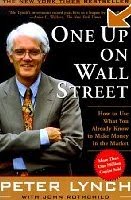Here is a summary of One up on Wall Street by Peter Lynch – this is one of the best books you could ever lay your hands on.
Peter Lynch argues how jokers like you and me could find hidden gems in the stock market much before the bigger jokers of Wall Street can if we keep our eyes open. He suggests that everyday information can be used to find spectacular growth stocks.
Peter used his skills at Fidelity to rake in huge profits from stocks that the market discovered much later than he did. Following are some of the gists taken from the book. Note the type of stocks he thinks we should be looking out for.
Summary of One up on Wall Street by Peter Lynch – types of companies
SLOW GROWERS
STALWARTS
FAST GROWERS

CYCLICAL
TURNAROUNDS
ASSET-PLAYS









Excellent summary! Great job!
You may also want to add given a stock how to identify its type? i.e. is it stalwart or fast grower etc.?
@Pavan Kulkarni, Thanks Pavan. That could probably be done in another article ? What strategy do you use for stock selection ?